Stasis in the Lower Palace: Theme and Design Analysis
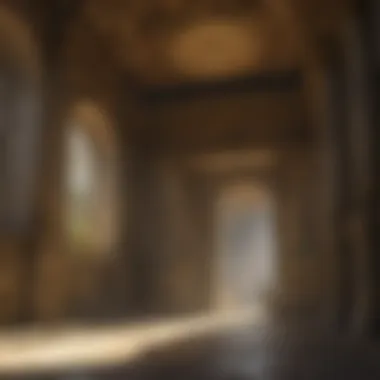
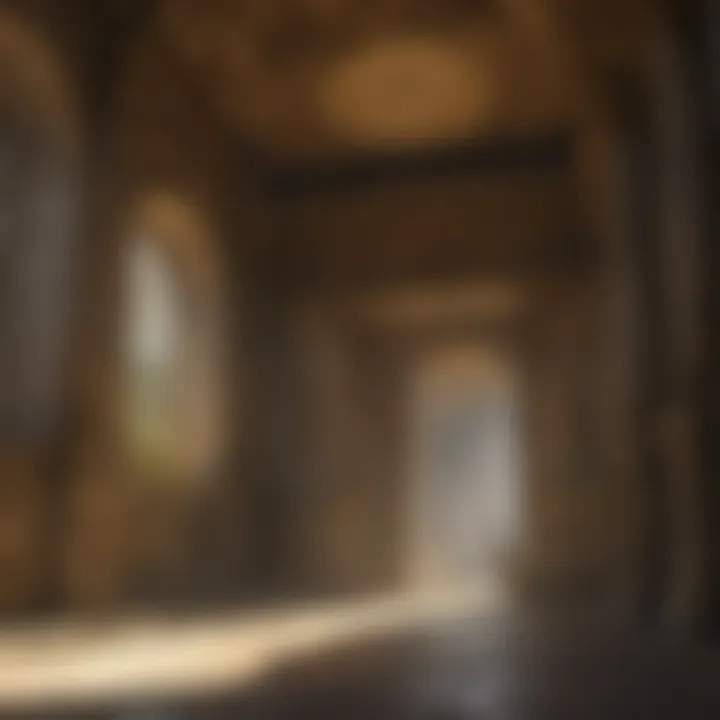
Intro
In the sprawling tapestry of the Zelda universe, the Lower Palace stands as a unique microcosm where time itself appears to stand still. Stasis in this context doesn’t merely echo a static presence; it encapsulates the intricate dance of stagnation and resolution that defines the series. As we peel back the layers of this architectural marvel, we'll uncover how the design mirrors the narrative, embodying themes both profound and relatable, all while intertwining with gameplay mechanics to deepen our understanding.
Game Reviews
In our quest to understand stasis, a thorough examination of the gameplay features, narrative threads, and overall aesthetics of the Lower Palace is essential. This area, unlike others, feels almost suspended in a state of reflection—each element seems to resonate with the deeper themes of the game.
Gameplay Features and Mechanics
The gameplay mechanics in the Lower Palace reflect a delicate balance of challenge and exploration. Players often find themselves maneuvering through intricately designed puzzles, requiring a blend of skill and strategy. The stasis mechanic, introduced in certain mechanics, puts players in a position where they must strategically navigate conflicts that arise—both physical and narrative. Consider how players utilize the power to freeze objects in time, forging paths and unlocking secrets while grappling with ever-looming threats.
Moreover, the interconnected nature of gameplay mechanics in this domain enhances the overall experience, allowing players to grasp the weight of their choices and the implications of a stasis-like existence. Key gameplay features often encourage revisiting previous areas, emphasizing that stagnation is not merely an obstacle but a doorway to understanding conflict within the game.
Storyline and Quests
The storyline within the Lower Palace unfolds through quests that are interwoven with the theme of stasis itself. Quests often revolve around restoring balance or resolving conflicts that linger as shadows throughout the narrative.
Diving into specific quests, players must navigate relationships involving characters who've been trapped in their own cycles of stagnation, mirroring the overarching conflicts faced in the Zelda narrative. For instance, side quests often challenge players to confront the consequences of their inaction, embodying the essence of stasis.
Visuals and Sound Design
Visually, the Lower Palace is striking. The architectural design stands as a testament to both beauty and the impression of timelessness. Grand halls filled with intricate carvings and lingering echoes create a landscape that feels both inviting and disconcerting. Each corner reveals another detail, drawing players deeper into the narrative fold.
Accompanying the visuals, the sound design plays a pivotal role in cementing the ambiance of stasis. Subtle whispers and the gentle cadence of ambient music ground players in a world where time feels out of joint, augmenting the emotional weight of the characters’ stories.
Comparison with Previous Titles
When held against the backdrop of earlier Zelda titles, the Lower Palace represents a significant evolution. The stasis concept is not wholly new; earlier games referenced this idea through various motifs. However, its manifestation within the Lower Palace redefines how players engage with and interpret the game's world. Whereas past games often focused on active confrontation, this palace beckons introspection and strategic decision-making.
The shift in focus from mere action to impactful storytelling marks an intriguing step forward, presenting players with a more sophisticated understanding of the consequences of their choices in a chaotic world.
"Stasis is not simply a state of being; it is the crucible in which conflict is both born and resolved."
As we transition to character analyses, we’ll further dissect the relationships within this world, highlighting how their arcs intertwine with the overarching motif of stasis.
Prologue to Stasis in the Lower Palace
Understanding the concept of stasis within the context of the Lower Palace is pivotal for anyone exploring the intricate nuances of the Zelda universe. This introduction sets the stage not just for a character’s journey through the game but also for delving into fundamental themes that echo across various plotlines. Stasis embodies a unique narrative device; it’s not merely about inactivity but invites players to contemplate the consequences of being stuck between past and future, between conflict and resolution.
In this exploration, we will dissect how the Lower Palace serves as a physical representation of stasis. Each layer of its design, from the walls lined with ancient inscriptions to the eerie silence echoing through its halls, synergizes with the overarching themes the game seeks to convey. The importance of stasis in this location cannot be overstated, as it sheds light on broader elements such as character development, gameplay mechanics, and narrative progression.
Understanding Stasis
Stasis is often misconstrued as a mere pause, but in the realm of game design, it speaks to a deeper philosophical underpinning about time and existence. Within the Lower Palace, stasis induces a reflection on stagnation, revealing characters trapped in emotional limbo, facing their inner turmoil without clear paths to resolution. This motif extends beyond mere gameplay; it probes into the psyche of the players as well, prompting them to ponder their own life experiences where they felt immobilized, caught in the throes of conflict or indecision.
The gameplay mechanics designed around this concept resonate with the experience of being suspended, making every action seem weighted and significant. Movement is not just a physical act but echoes a character's emotional state and narrative journey.
Overview of the Lower Palace
The Lower Palace stands as a monumental stalwart amidst the ever-changing landscapes of Hyrule. Its architecture combines elements that are both grand and oppressive, creating a sense of history and timelessness that embodies its stasis theme.
Key features include:
- Grand Entrance: The lower levels welcome players with vast, vaulted ceilings that suggest the grandeur of a bygone era. This architectural choice reinforces the feeling of being in a space that is timeworn yet significant.
- Ancient Inscriptions: Walls adorned with cryptic messages and symbols tell stories of those who came before. They serve as physical reminders of the legacy of the palace, underscoring the notion that time can stand still while history lingers.
- Dimly Lit Corridors: The ambiance inside is meticulously crafted. Flickering torches and shadowed corners evoke a sense of foreboding, putting players in a contemplative state, mirroring the internal struggles of the characters venturing through.
- Central Sanctum: At the heart of the Lower Palace lies the Sanctum, a room that embodies a powerful stillness—almost sacred. This space becomes pivotal for confrontations and decisions, working as a stage that emphasizes the tension of choice versus inaction.
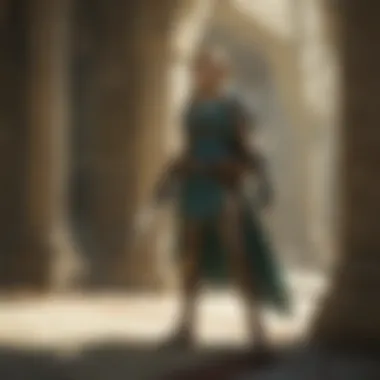
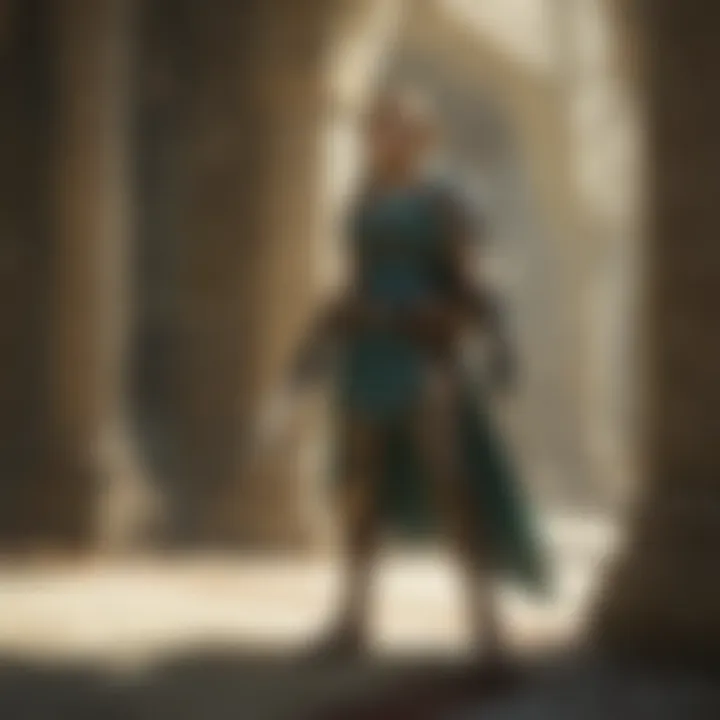
Ultimately, the Lower Palace acts as a microcosm of conflict and resolution, allowing players to engage deeply with the narrative, challenging them to break free from their own stasis by confronting the unyielding forces at play.
Architectural Aspects of the Lower Palace
Examining the architectural aspects of the Lower Palace offers a lens through which we can see how design choices echo deeper thematic elements in the Zelda universe. The intricate designs and layouts not just serve an aesthetic purpose but also carry significant meaning in terms of gameplay and narrative. This section will delve into the details of design elements and symbolism that encapsulate the essence of stasis, followed by an exploration of how the interiors of the Lower Palace reflect this concept.
Design Elements and Symbolism
The design elements found within the Lower Palace mirror various aspects of stasis, melding functionality with intricate symbolism. From the towering stone walls to the grand entrance, every structural facet conveys a sense of immobility, suggesting a palace that has withstood the test of time.
Many players have noticed how the color palette—predominantly muted tones—intentionally creates a feeling of timelessness, almost like stepping into a moment trapped in time. The vast hallways evoke an ambiance of grandeur yet stagnation, inviting players to contemplate their very purpose within such a space. Each detail, such as the use of arches and pillars, speaks not only to aesthetic beauty but also serves to reinforce the themes of entrapment and the cyclical nature of conflict found in the series.
To further illustrate, the placement of the royal insignia on the walls is another crucial design element. This insignia not only signifies allegiance to a bygone era but also works as a metaphor for power frozen in a state of limbo, echoing the larger conflict at play in the Zelda narrative.
- Stone Work: Rugged yet regal, the stone work signifies durability and serves as a reminder of the palace's history.
- Sculptures: Statues of former royals gaze down from their pedestals, perpetually watching, symbolizing the weight of legacy and responsibility in a world riddled with chaos.
Interiors Reflecting Stasis
The interiors of the Lower Palace are stunningly designed to echo the notion of stasis. Players routinely comment on how traversing the expansive chambers feels like stepping through a museum of hardships and triumphs. The decor, a blend of ornate tapestries and intricate frescoes, tells stories of the past, yet they remain unchanged, swathed in an unyielding silence. This aspect of interior design embodies the ongoing struggle within the game—characters, much like the elements of the palace, are caught in a state of stasis, unable to evolve amid external conflicts.
In the throne room, for example, the arrangements—meticulously crafted thrones positioned to face an empty space—offer a profound commentary on leadership and the consequences of abandonment. The choice of furnishings symbolizes the weight of choices made by past rulers, each piece of furniture stands as a silent sentinel, never afraid, but too weary to take action.
"The palace interiors act as a canvas upon which the emotions of the narrative are painted, illustrating the blurred lines between history and the present."
- Lighting: Dimly lit corridors punctuated by flickering torches contribute to an overall atmosphere of visual stasis, trapping players in a space that feels frozen in time.
- Furniture: Each piece of furniture echoes the past, grounded in themes of nostalgia and regret, providing a backdrop against which pivotal character developments unfold.
In sum, the architectural aspects of the Lower Palace intricately weave together design elements and interior symbolism to elevate the concept of stasis within the Zelda universe. It provides players a subtle but poignant backdrop for moral confrontations and personal growth. As we move forward in our exploration, we’ll reveal how these details influence not just the aesthetic experience but also the gameplay and the overarching narrative.
Narrative Significance of Stasis
Exploring the narrative significance of stasis in the Lower Palace reveals how deeply it intertwines with character evolution and overall storytelling within the Zelda universe. This theme of immobility plays not just as a backdrop but also sheds light on greater conflicts and resolutions that unfold throughout the game. Stasis serves as a lens through which we can view the struggles of characters, the impact of their circumstances, and the larger narrative arcs at play.
Stasis as a Metaphor
Stasis functions as a multifaceted metaphor that transcends mere physical immobility. It characterizes a period where progress seems halted, mirroring the internal struggles of characters faced with overwhelming adversity. In the context of the Lower Palace, stasis often represents moments of contemplation, reflection, and at times, despair. For instance, the main protagonist, while navigating this world, often grapples with decisions that come with weighty consequences. This hesitance to act not only deepens the character’s development but also challenges the player to think critically about their own choices within the game.
The stalwart design of the Lower Palace echoes this metaphor. The heavy stone walls and immovable structures symbolize the burdensome weight of what it means to be trapped, both physically and emotionally. As players traverse these stagnant spaces, it becomes apparent that the silence and stillness can evoke feelings of tension and anticipation. This heightened atmosphere compels players to plan their next moves with care, integrating the metaphor of stasis seamlessly into the gaming experience.
"Within stasis lies the potential for change; it is here where characters truly confront themselves and the direction their lives should take."
Character Development in a Static Environment
The static environment of the Lower Palace shapes character development in various intriguing ways. When characters are placed within this unchanging context, their responses to the situation become remarkably telling. They are often forced to confront their fears or regrets, providing depth and nuance to their personalities.
Consider the character of Princess Zelda, whose experiences in the Lower Palace embody the very essence of the theme. As she navigates through the labyrinthine corridors of the palace, her interactions with other characters reflect the tension between stagnation and action. The contrast between her fixed role and moments of resolve showcases her growth, revealing a complex figure torn between duty and desire.
This theme does not only apply to main characters. Side characters and even antagonists are given depth through their interactions in this static setting. They too exhibit growth, revealing motivations that often lead back to their origins, creating a rich tapestry of narratives woven tightly around the core idea of stasis.
The static nature of this environment also opens up avenues for exploration. Players are encouraged to dig deeper into the stories of these characters, crafting a richer experience that prompts thoughts on how stasis affects not only the game world but the players' own understanding of gradual change.
Ultimately, the narrative significance of stasis is profound, offering insight into the psyche of characters and the broader story arcs. It challenges notions of progress in both game design and personal growth, underlining the delicate balance between motion and stillness.
Gameplay Mechanics Related to Stasis
The gameplay mechanics revolving around stasis is not just a gameplay feature; it's a lens through which players can explore the many facets of the Lower Palace. Stasis serves as a stopping point in a world that constantly moves forward. This pause in activity allows players to breathe and reassess their strategies, reshaping their interactions with the environment. It’s a combat symphony where timing and foresight dance together in an intricate waltz.


How Stasis Influences Player Strategy
In the tense moments when players engage with the stasis mechanics, a shift in tactics often unfolds. Players must utilize stasis not merely to freeze time but to create opportunities. Placing an object in stasis is like putting a ticking time bomb on pause; its potential energy must be harnessed thoughtfully. For example, players can manipulate rolling boulders or swinging axes, freezing them in mid-motion and then launching them toward enemies or obstacles at just the right moment. This dynamic encourages a strategic mindset, prompting players to think several steps ahead.
Moreover, the stasis mechanic’s cool-down periods serve as strategic gates. After your initial freeze, players must wait before using it again, which forces them to adapt and plan alternative approaches. Each encounter becomes a chess match, where both player and opponent must consider how to outsmart each other within the constraints of time and movement.
"Stasis is not just a tool; it’s a philosophy of gameplay, a dance of time that players navigate with grace and precision."
Puzzles and Stasis Interaction
Puzzles in the Lower Palace often rely heavily on stasis, blending creativity with logic. The need to incorporate stasis into puzzle-solving creates an engaging layer of complexity that is both challenging and rewarding. These puzzles typically require players to interact with various elements of the environment, from weight-sensitive platforms to mechanics that rely on precise timing.
- Example of a Classic Puzzle:
Imagine a series of gears that must be aligned perfectly to open a door. Players utilize stasis on a rotating gear, aligning it while it’s frozen, creating just the right conditions to allow other gears to move freely. This illustrates the elegance of how stasis mechanics are integrated into the puzzles, allowing players to manipulate their environment in captivating ways. - Challenging Elements:
Some puzzles necessitate quick decision-making, as players must time their stasis usage to overcome moving elements or avoid traps. Here, the player feels the pressure of both timing and precision, making the experience more immersive.
Thematic Value of Stasis in Zelda Lore
When we think about Zelda lore, it’s easy to focus on the epic battles, rich character stories, and intricate plotlines. However, the concept of stasis plays a significant yet often overlooked role, especially within the confines of the Lower Palace. This section aims to unpack the thematic value of stasis, illustrating how it blends with core elements of the series to forge a unique narrative experience.
Stasis isn’t merely a mechanic or a gameplay feature; it serves as a metaphor that interconnects ideas of stagnation, conflict, and eventual resolution. Understanding this thematic value offers deeper insights into the foundatins of the Zelda universe.
Connection to Major Plot Points
In the realm of Zelda, stasis often surfaces in pivotal plot points, shaping the narrative arc and influencing character journeys. The Lower Palace stands as an embodiment of this stasis, reflecting characters who remain trapped in cycles of conflict and inaction.
For instance, the character of Link is consistently tasked with breaking stasis, which acts as both a literal and figurative hurdle. His quests demand not only physical confrontation but also the dismantling of emotional and societal stagnation. In the Lower Palace, the towering structures and enclosed spaces mirror the characters’ feelings of being boxed in, sometimes by their own choices or the expectations of others.
Furthermore, the narrative often juxtaposes moments of stasis with dramatic shifts, signifying moments of growth or realization. When Link interacts with various entities in the Lower Palace, he often unearths stories steeped in conflict that challenge the status quo. This contrast highlights how stasis is deeply tied to the emotional backdrop of the characters.
"In a land where time can feel frozen, the breaking of stasis resonates like a symphony beckoning players to engage with the narrative."
Contrasts with Fluidity in Other Areas of the Game
Around the Lower Palace, players are greeted by diverse landscapes that pulsate with fluidity, presenting a striking contrast to the stasis that envelops the palace itself. This fluidity can be seen in regions like Hyrule Field, where players experience dynamic changes in weather, day/night cycles, and various NPC interactions that drive the story forward.
In contrast, the Lower Palace acts as a sanctuary of stability where much of the conflict stems from the characters' unwillingness to change their circumstances. The juxtaposition of stillness in the palace sets the stage for players to appreciate the impact that movement and progression have elsewhere in Hyrule.
For example:
- The Temple of Time stands as an intersection of time and space, emphasizing the ongoing movement of the Zelda timeline.
- Conversely, Hyrule Castle, filled with its shifting pillars and platforms, echoes themes of constant change and evolution.
This contrast elevates the theme of stasis; it compels players to navigate the game world with heightened awareness of how stagnation in one realm can profoundly affect dynamics in another.
Ultimately, the thematic exploration of stasis in the Lower Palace not only enriches the player experience but also prompts a contemplative examination of greater conflicts within the Zelda saga. As players journey through these themes, they unravel a tapestry of stories woven into the fabric of Hyrule, leading to memorable moments that resonate long after the game is turned off.
Comparative Analysis with Other Zelda Locations
Understanding the nuances of stasis within the Lower Palace gains more depth when we look at it through the lens of other locations in the Zelda universe. This comparative analysis helps to highlight not only how stasis serves a specific narrative function in the Lower Palace but also its contrasting mechanics and themes in other iconic surroundings. By examining the elements of chaos and rest outside the Lower Palace, especially in places like Hyrule Field and the Temple of Time, we can better grasp the multifaceted implications of stasis.
Stasis vs. Chaos in Hyrule Field
In Hyrule Field, the environment often embodies a kind of frenetic energy and chaotic movement. Here, players experience a world that is constantly alive and shifting. As Avatar Link traverses this vast landscape, chaos reigns amid wandering foes, dynamic weather, and shifting time cycles. The unpredictability of encounters—like sudden monster ambushes or environmental challenges—contrasts sharply with the sense of stasis found in the Lower Palace.
- Key Differences:
- Narrative Impact: The chaos in Hyrule Field enhances the sense of adventure and risk, forcing Link to adapt and evolve, whereas stasis in the Lower Palace solidifies emotional connections, presenting a reflective pause.
- Dynamic Environment: Hyrule Field features vibrant interactions, encouraging player engagement through unpredictability.
- Temporal Fluctuations: Time flows differently here; events unfold at a rapid pace, challenging players' strategies.
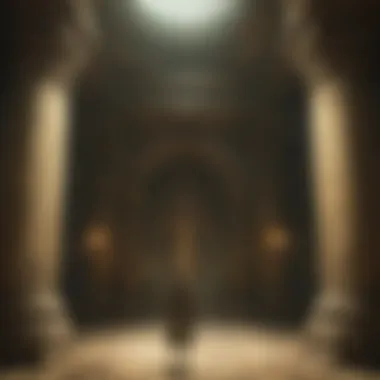
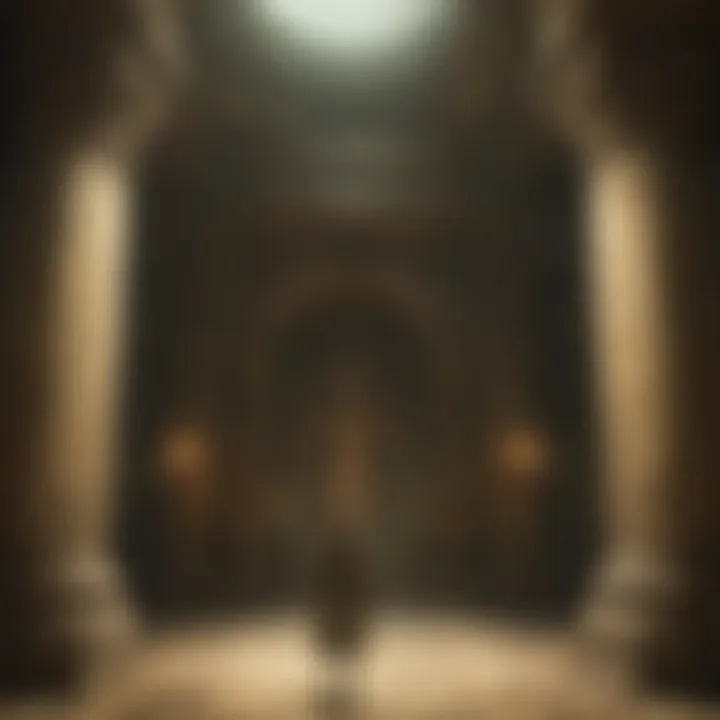
Stasis serves as an anchor in the Lower Palace, allowing players to explore character emotions and themes without the relentless momentum found in Hyrule Field. This juxtaposition offers players a breath—a space to contemplate the weight of decisions and conflicts that define the saga.
Rest vs. Stasis in the Temple of Time
When we shift our focus to the Temple of Time, we enters a space that embodies the notion of rest, standing in contrast to the stasis observed within the Lower Palace. The Temple of Time is a sanctuary; it symbolizes a point of peace and continuity rather than inaction. Here, Link can rejuvenate and gather strength, reflecting an essence of time that acknowledges both its passage and preservation.
- Key Elements:
- Sanctuary for Players: The Temple allows players to save, heal, and recharge, facilitating gameplay progression.
- Historical Context: It signifies a return to roots, embodying nostalgia and continuity throughout the series.
However, this restful nature presents a different narrative opportunity. While rest rejuvenates characters, stasis in the Lower Palace embeds them within a larger thematic exploration of stagnation and development.
- "Stasis in the Lower Palace challenges individuals, insisting on a contemplation of change and the need for resolution amid a world in turmoil."
In essence, comparative analysis of these locations reveals the myriad ways game design interweaves environmental mechanics and narrative significance. Each contributes to a broader understanding of the Zelda universe where stasis can ignite introspection, while chaos encourages action, and rest offers recovery.
Implications for Future Zelda Games
The exploration of stasis in the Lower Palace unveils pathways for future Zelda titles to traverse, particularly in how the franchise interprets the dualities of time and space. With the profound connections established in past games, this section intends to shed light on potential evolutions in gameplay and storytelling. The nuances of stasis could serve as a foundation not just for world-building, but also for enriching player experiences in upcoming releases.
Evolving Concepts of Time and Space
As players journey through the expansive Hyrule landscape, encounters with stasis introduce a unique dynamic that can reshape narrative structures in forthcoming games. Rather than merely marking a pause, stasis can symbolize a struggle against the current of time itself. For example, consider how Breath of the Wild demonstrated non-linear progression. Introducing stasis-like mechanics could heighten narrative complexity, allowing players to manipulate time more intricately than before.
By incorporating evolving concepts of time, developers can challenge players to think outside the box. Picture a scenario where the consequence of actions affects the world not just immediately but echoes through time, changing future gameplay elements. This could lead to:
- Alternate timelines where choices shape distinct realities, emphasizing the weight of decisions.
- Time-bound quests that require players to act quickly, giving a real sense of urgency.
- Temporal puzzles that require strategic planning to solve obstacles, showcasing the depth of problem-solving as players navigate through time shifts with finesse.
"Stasis is not a mere static point; it can become a compelling narrative tool that expands possibilities within the game universe."
Potential for New Gameplay Mechanics
If the implications of stasis are explored further, Zelda could harness this concept to introduce innovative gameplay mechanics that revolutionize player interactions and challenge traditional paradigms. For instance, imagine mechanics that allow players to temporarily freeze enemies, temporarily altering the battlefield.
These gameplay elements could encourage a new way of engaging with the environment and adversaries, where stasis becomes a weaponized concept rather than just an environmental feature. Potential mechanics might include:
- Stasis abilities that temporarily suspend objects in mid-air, creating opportunities for unique puzzle-solving strategies.
- Character abilities that allow interacting with areas of stasis, reshaping the landscape based on an understanding of time manipulation.
- Timers or gauges that regulate stasis power, fostering strategic thinking about when and how to utilize these coveted abilities during intense encounters.
This re-imagining of gameplay could bridge the connection between the player and the intricate lore that defines the Zelda series. By pushing boundaries and blending gameplay with narrative significance, stasis can evolve into a keystone of Zelda's future, deeply resonating with fans who appreciate the layered storytelling.
In summary, the implications of stasis in the Lower Palace extend beyond mere aesthetic choices. They lay the groundwork for innovative storytelling and intricately designed gameplay mechanics that could shape future Zelda titles. As developments unfold, it's clear that the essence of stasis must evolve alongside the complex, rich narratives that fans hold dear.
End: The Lasting Impact of Stasis
Stasis in the Lower Palace serves as a pivotal element, touching on various aspects of gameplay, narrative, and game design. Understanding its ramifications gives players a deeper appreciation of the Zelda universe, particularly how stasis as a concept can shape our experience in other games. The intersection of time, space, and character development comes to light here, illuminating elements such as stagnation and its eventual resolution through gameplay mechanics. The timelessness of this theme resonates with players, challenging them to think critically about their surroundings and decisions while playing.
Summation of Key Points
Several key takeaways emerge from our exploration of stasis within the Lower Palace:
- Architectural Significance: The design of the Lower Palace highlights a strong symbolic relationship with stasis, making the physical space a reflection of the theme itself.
- Narrative Depth: Stasis acts as a powerful metaphor in the storytelling, revealing deeper layers of conflict and resolution that drive character motivations and plot advancements.
- Dynamic Gameplay Mechanics: The interaction of stasis influences player strategies, turning seemingly static moments into avenues for critical thinking and problem-solving. This brings a rich layer of complexity to the gameplay experience.
- Thematic Resonance in Zelda Lore: The connections made between stasis and other Zelda areas help to underscore recurring narrative themes across the franchise, reinforcing Zelda's emotional and thematic depth.
Thus, the impact of stasis transcends mere gameplay. It leads us to consider the broader implications of time and conflict within the narrative.
Future Research and Exploration
The topic of stasis in the Lower Palace invites further inquiry into various areas within the Zelda franchise:
- Investigating New Games: Upcoming Zelda titles could expand upon or reinterpret stasis mechanics, presenting fresh ideas on time and character movement.
- Comparative Studies: Examining how other games in the genre handle similar themes may yield insights that extend beyond the confines of Hyrule, showcasing the uniqueness of the Zelda narrative.
- Engaging the Community: Forums like reddit.com provide a place for fans to discuss and debate the implications of stasis and its impact, allowing for a diverse range of perspectives.
- Interdisciplinary Approaches: Combining insights from philosophy, art history, and game design theory can help deepen our understanding of how stasis operates within not just Zelda, but also across the gaming landscape as a whole.
In summary, as we delve deeper into the world of Zelda, we find that stasis is not just a gameplay mechanic; it is a reflection of greater ideas that resonate throughout the series. Each exploration of these ideas can open new avenues for understanding the work and its cultural significance. The implications of stasis are vast and ripe for further exploration.







